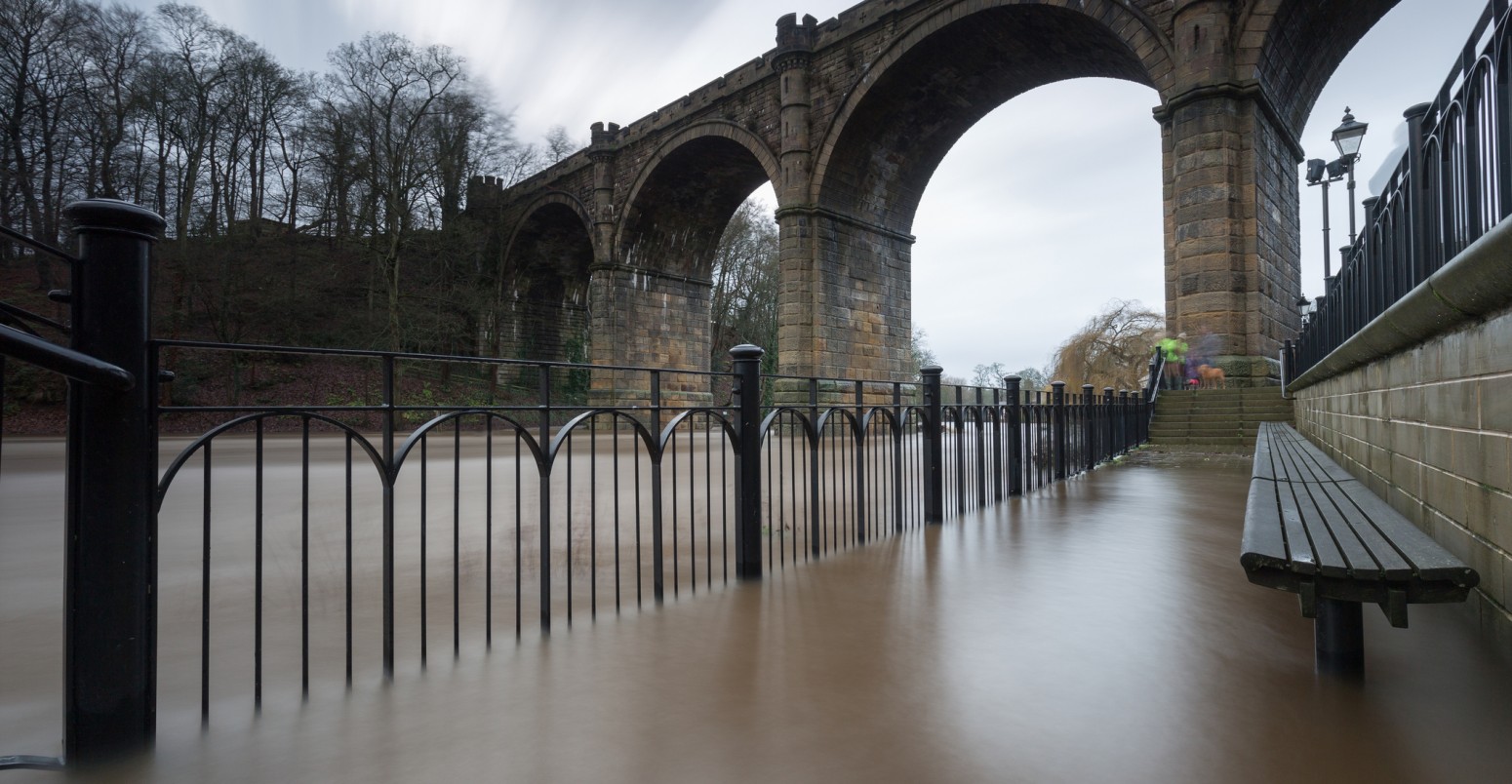
Changing climate demands new approach to flood risk, say MPs
Robert McSweeney
11.02.16Robert McSweeney
02.11.2016 | 12:01amA new report by MPs says the government could be doing a lot better at managing flooding, as well as telling people how much risk they are exposed to as the climate changes.
The report comes from the Environment, Food and Rural Affairs (Efra) select committee, a cross-party parliamentary group that scrutinises the work of the Department for Environment, Food and Rural Affairs (Defra) and its related organisations.
In January, Efra launched an inquiry into the winter 2015-16 floods in England. At the time, the committee’s chair, Neil Parish MP, said that the flooding seen in 2015-16 was “becoming all-too-frequent an occurrence”:
Over this year, the committee has gathered written and spoken submissions of evidence on four topics: predicting the future, protecting communities and infrastructure, managing water flows, and planning for floods.
With the evidence now in, the new report describes their findings and recommendations. Carbon Brief takes a look at how climate change features.
‘Already having an impact’
The main focus of the recommendations in the report is for a “new governance model” for how the government manages flood risk in England.
This includes the proposal for a new English Rivers and Coastal Authority – along with new Regional Flood and Coastal Boards – to take over from the Environment Agency on delivering national flood risk management plans. This would “enable a close link between national plans and local aims,” the report says, all held to account by a new National Floods Commissioner for England.
Delving a little deeper, the report highlights climate change as a key reason for improving the way flood risk is managed. It says:
“Changing weather patterns are already having an impact [on flooding],” says the report, referencing the heavy rainfall over the 2015-6 winter and the succession of storms – Desmond, Eva and Frank – that caused flooding in northern parts of the UK.
The report notes that the impact of climate change will continue to increase flood risk in the UK:
Research into the UK winter floods in 2013-14, for example, has already showed that climate change made the sustained wet and stormy weather 43% more likely.
The report doesn’t discuss how the impacts of climate change should be included in flood risk assessments. It does, however, refer to the extreme rainfall modelling work carried out by the Met Office for the government’s recent National Flood Resilience Review (NFRR).
The NFRR was set up following severe flooding during the wettest December on record in 2015. In September, it published its findings on flood risk over the next decade and how the UK could be better prepared, as the Efra report describes:
However, as Carbon Brief identified, the extent to which this modelling work recognises the role of climate change in extreme rainfall has caused quite a lot of confusion. While the expectation for bouts of rainfall 20-30% heavier than today takes into account the contribution from climate change to date, it largely reflects what we can expect to see within the bounds of natural variability – not future climate change.
Communicating flood risk
Another of the report’s recommendations deals with how the level of flood risk is communicated to the public.
Typically, flood risk is described in terms of its “return period”. This is a measure of how often you would expect a flood event of a given size to come around. For example, a “one in 50-year” event can be expected to occur, on average, about once every 50 years. Whereas a one in 100-year event is more extreme and occurs less often – hence the longer return period.
But this can be confusing, the report says:
For example, a “one in 50-year” return period can give the impression that once there has been a flood, there won’t be another one for another 50 years. Whereas, what a 50-year return period actually means is that there is a 1 in 50 (or a 2%) chance that a flood of a given severity would occur in any one year. You could have ‘one in 50-year’ floods in consecutive years and nothing for the next 100 – it’s just that over the long-term it works out at once every 50 years.
Also, perhaps counterintuitively, if the risk of flooding increases, then the return period goes down. So, for example, a one in 50-year flood might become a one in 30-year event because of climate change, signifying that an event of this magnitude is happening more often.
Prof Sir David Spiegelhalter, Winton Professor for the public understanding of risk at the University of Cambridge, who wasn’t involved in report, says the return period is “one of the worst possible ways to communicate risk”:
A better approach is to use the percentage chance of a flood over the coming five or 10 years, Spiegelhalter tells Carbon Brief, as it provides “something that could be communicated in whole numbers, and presents a realistic horizon of concern.”
Although the return period isn’t perfect, any approach still needs to communicate odds in some way, says Prof Myles Allen, professor of geosystem science at the University of Oxford, who also wasn’t involved in the report. He tells Carbon Brief:
And Allen thinks that the public aren’t as confused by return periods as the Efra report suggests:
However, the Efra report argues that an alternative is needed:
Real-time
The Efra report also recommends that the Met Office and Environment Agency make greater use of “real-time” data for flood warning systems:
In response to the Efra report, the Met Office says it “welcomes” their recommendations on both real-time data and communication of flood risk:
Update 04/11/2016: This article was updated to include comments from Prof Sir David Spiegelhalter.

